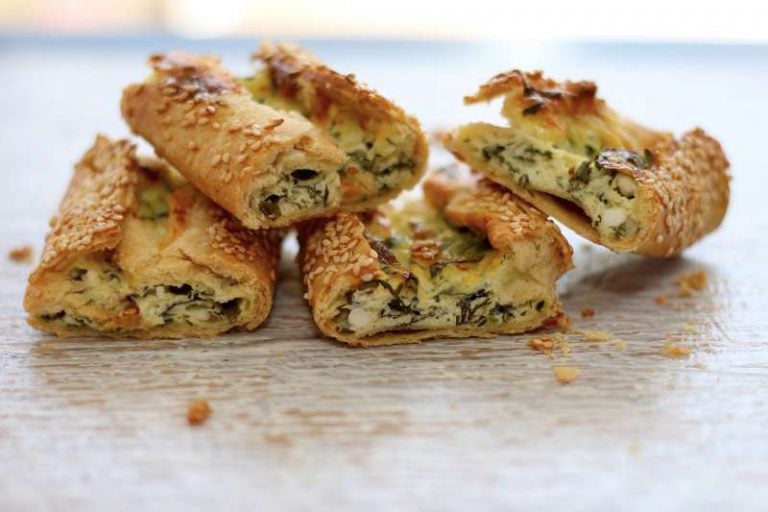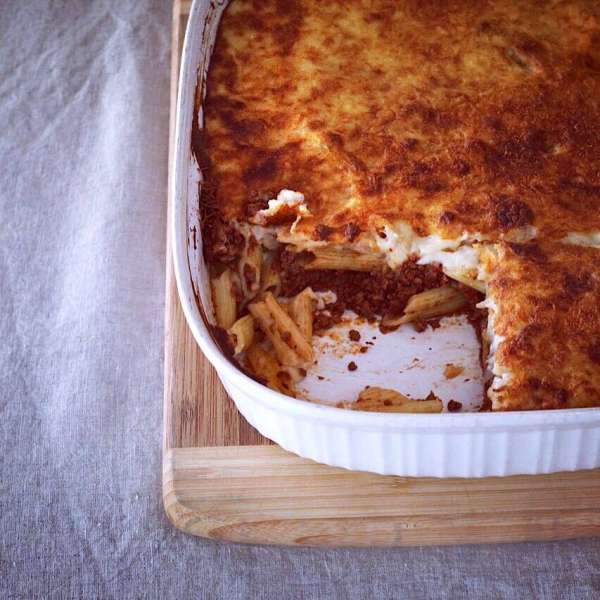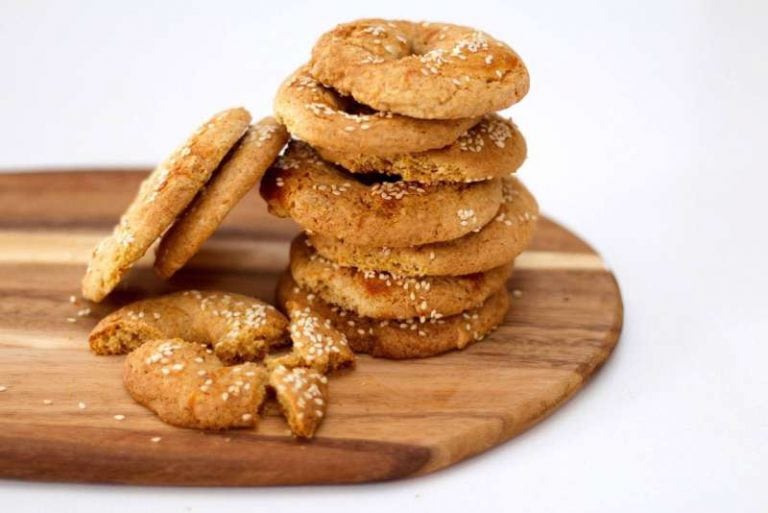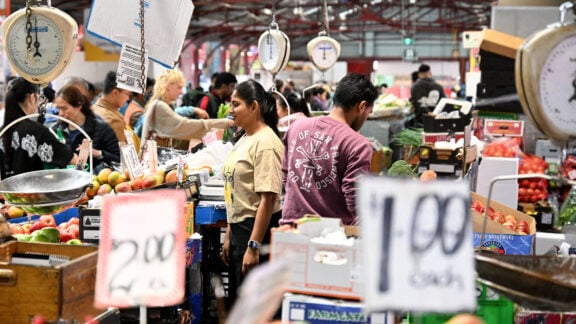When Helen Tzouganatos was diagnosed with coeliac disease eight years ago, she admits the one thing she missed most was her mum’s spanakopita.
But it wasn’t long before the Sydney-based mum of three realised she wouldn’t have to forego her favourite dishes, setting out to master the skill of gluten-free cooking.
And with a passion for food, cooking and photography, and a background in marketing, Helen decided to take her interests and combine them in her blog Hungry and Fussy.
“I was constantly being asked for gluten-free cooking tips and restaurant recommendations, so I thought it (the blog) would be a great resource for the public,” Helen explains.
And thus far the response has been overwhelming, with the blog having received over 5,000 views in the first two months alone.
Aside from her website, Helen’s recipes have been picked up by a number of online publications including YUM Gluten Free magazine, and soon she will be a contributing editor on www.feedfeed.info – one of the most popular international food websites around the globe.
While she recalls that eating out was a struggle when she was first diagnosed, she admits that with more demand for gluten substitutes, the food scene has changed dramatically.
“Fast forward 10 years and many restaurants mark gluten-free items on their menu and the wait staff can confidently guide you through the gluten-free choices available to diners,” she says.
Thankfully for those who enjoy a Mediterranean diet, through her culinary journey Helen has discovered that going gluten-free doesn’t mean entirely overhauling your diet.
“Greek food lends itself perfectly to gluten-free cooking because we eat a lot of healthy grilled proteins, cheeses, fresh salads and vegetables. Potato and rice are also fine so there is no need to cut out baked potatoes or rizogalo!”
However, be prepared to see your weekly shopping expenses come up in price – but with good reason.
“Gluten-free breads and flours are generally a little more expensive, but quite often they are also of better quality,” Helen explains.
“It is cheaper to fill products with wheat starch and flavourings than to include more wholesome natural ingredients.”
The blogger’s love of cooking was born through an upbringing centred around the dinner table. Like most Greek migrant women, Helen’s mum is a great cook and showed her love through nurturing and cooking for those closest to her.
“She is a great cook. Certain aromas such as baked cinnamon and mastiha immediately transport me back to my childhood and mum’s kitchen table.
“I recall rushing home from school and raiding the koulouri (biscuit) jar on many occasions,” she says, which is where her “cookie addiction” and love of baking stem from.
“My favourite biscuits are my gluten-free Greek sesame rings (see recipe below). They are really crispy, light and not overly sweet, which makes them extremely moreish.”
But it’s not only individuals affected by gluten that are avoiding the protein. While Helen believes “you only really need to eliminate gluten from your diet if you have a gluten intolerance or coeliac disease,” she admits that there can be added benefits for all.
“The biggest benefit in forgoing gluten is that it forces you to eliminate a lot of processed starchy food out of your diet.
“You’d be surprised how many packaged foods contain gluten. Seasoning, sauces, stocks, chips, and lollies usually contain wheat starch. By eliminating packaged foods you cook from scratch and the result is much tastier, healthier food that is nutrient dense,” she explains.
So let us get this straight Helen: looking after three children, while also contributing and editing various online publications, and dedicating all your free time to researching and creating recipes, cooking and updating your blog? I think we’d all agree you deserve that extra (gluten-free) cookie.
Main substitutes for classic Greek dishes:
– Gluten-free pastry for all the pastry classics i.e tiropita, spanakopita, baklava.
– Replace normal flour with gluten-free flour in cakes, biscuits, karithopita and koulouria.
– Replace flour with grated potato in keftedes; finely grated potato creates a lighter, fluffier meatball.
– Use tapioca flour instead of normal flour to dust haloumi and calamari; tapioca creates a beautiful brown crisp crust.
– For pastitsio and moussaka replace normal flour with gluten-free flour in the béchamel, and use gluten-free penne pasta in the pastitsio.
Here are some of Helen’s favourite and most delicious recipes:
Spanakopita is a traditional Greek savoury pie filled with spinach and cheese. The plain cheese version is called tyropita and is equally delicious. Helen’s mum is known as the ‘queen of spanakopita’, a deserving title given the perfect unison of golden hand rolled pastry and melt in your mouth cheese filling. This is a recreation of that pita with a gluten-free pastry, probably the most challenging baking technique for a gluten free chef. The trick to achieving a crispy gluten-free pastry is to roll out the dough as thinly as possible without breaking it between two sheets of baking paper. If you are pushed for time you can use a store bought gluten-free pastry, but just remember to roll it a little thinner. Makes 12 pieces.
Gluten-free Spanakopita

Ingredients
Savoury pastry:
200g gluten free flour, plus extra for dusting
1/2 tsp xantham gum
1 tsp salt
100g cold butter, chopped
1 egg
80mL cold milk
Cheese & spinach filling:
300g ricotta
200g Dodoni fetta
1 cup English spinach, chopped
2 shallots, finely sliced
2 tablespoons chopped dill
1 egg
1 tsp salt
Pinch of cracked pepper
Beaten egg for brushing
Sesame seeds (optional)
Method
Pastry:
1. Put the flour, salt and xantham gum in a food processor and pulse to combine. Add the butter and pulse until mixture resembles fine breadcrumbs.
2. With the motor running add egg and milk. Shape into a flat square, wrap in cling film and rest in fridge for 1 hour.
Cheese & spinach filling:
3. Combine all ingredients in bowl and mix thoroughly with hands.
Assembly:
5. Remove pastry from fridge and place on a dusted surface. If dough is too dry you can add some milk to moisten and if it is too sticky dust with more flour. Slice square into three long strips and roll each strip out thinly between two sheets of baking paper. A thinner pastry will deliver a crispier texture.
6. Place a strip of cheese filling along centre of pastry. Brush long pastry edges with beaten egg and fold over each edge to seal. Brush top of pastry with egg and sprinkle with sesame seeds.
7. Place pie strips on lined baking tray. Cook for 35 minutes in 200C oven or until golden brown.
8. Slice each strip into 4 pieces and serve.
Pastitsio with lamb, rosemary & oregano

Pastitsio is a traditional Greek baked pasta dish, and Greece’s answer to lasagna. The key differences are lamb mince instead of beef and the use of tubular pasta as opposed to sheets. Helen’s hearty gluten-free version is made using gluten-free penne and is wonderfully comforting on a cold winter’s day. Serve with a Greek salad when entertaining friends to showcase a traditional dish that captures the heart of the Greek kitchen. Serves 6.
Ingredients
300g gluten-free penne pasta
3 tbs olive oil
1 onion, finely diced
2 cloves garlic, chopped
500g lamb mince
1 tsp dried oregano
1 tbs rosemary, chopped
2 x 400g tin crushed tomato
2 tbs tomato paste
Cinnamon quill
Pinch of grated nutmeg
Sea salt and cracked pepper to season
Bechamel:
100g butter
100g gluten free plain flour
800mL full cream milk
100g cheddar cheese
100g parmigiana reggiano
1 beaten egg
Pinch of cinnamon
Method
1. Cook pasta according to packet instructions, toss in olive oil, set aside.
2. Heat olive oil in a medium sized pot, add onion and garlic and sauté until soft.
3. Add mince, oregano, rosemary and brown.
4. Add crushed tomato, tomato paste cinnamon quill and nutmeg and simmer on low heat for 1 hour. Season with salt and pepper.
5. For the béchamel melt butter over low heat in a saucepan and stir in flour until a smooth paste is formed.
6. Slowly pouring in milk stirring simultaneously. Keep stirring until a thick consistency is achieved.
7. Remove from heat and whisk in both cheeses, beaten egg and pinch of cinnamon. Season to taste.
8. To assemble pastitsio oil a rectangular casserole dish. Place pasta into dish and pour meat sauce on top. Stir to combine and add extra kefalogaveria cheese. Top with béchamel sauce.
9. Bake in preheated oven at 200C for 40 minutes or until golden.











